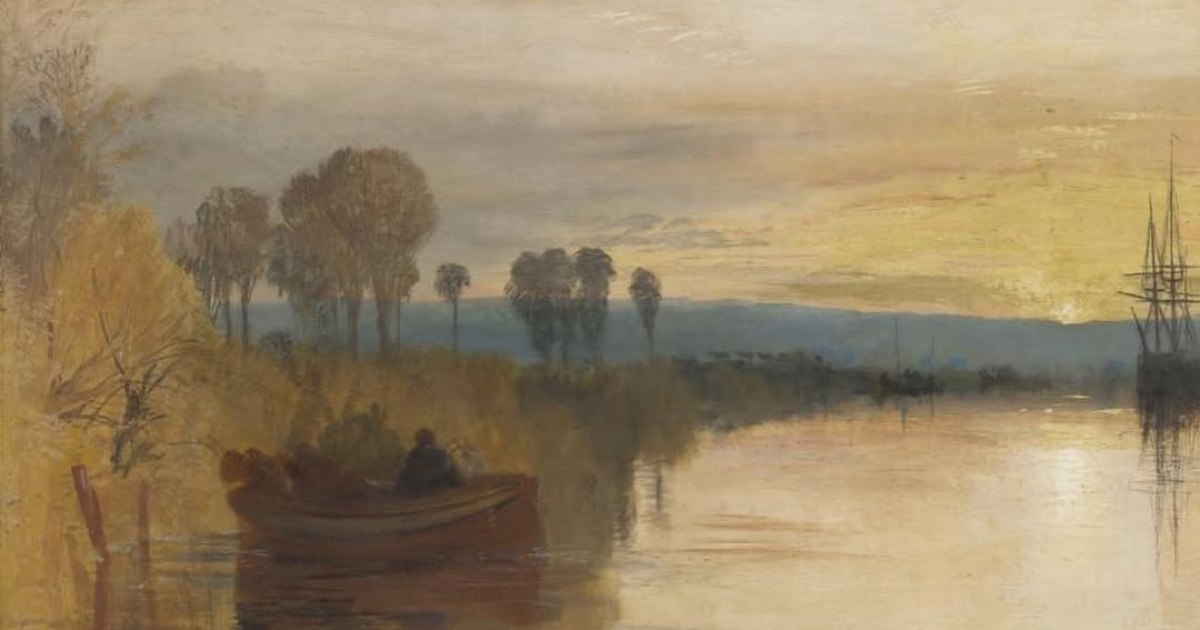The light that never fades: The art of William Turner
He lived to paint. Nothing else mattered to him

William Turner is a name that evokes the salty breeze of the sea and the brilliance of shimmering light. To describe his life and work is to tell a story of perpetual struggle against storms both on the ocean and within his soul. His paintings beckon you to linger as if each brushstroke holds a secret waiting to be discovered.
“The sun is God,” Turner once declared. This simple phrase encapsulates his approach to art. For him, light was not just a physical phenomenon but a symbol of truth, beauty, and the endless pursuit of meaning. In every painting, light comes alive, drawing the viewer into a world of profound emotion.
The artist of light and wind
Born in 1775 in London, the son of a barber, Turner grew up in a bustling city shadowed by the Industrial Revolution. Yet, young William saw the world differently. The light reflecting off rooftops and the mist dancing over the Thames became his inspirations.
His childhood was fraught with hardship. His mother, suffering from mental illness, passed away in an asylum when he was just 10. His father became his anchor, proudly displaying and selling his son’s drawings in his barbershop, always believing in his talent.
At the age of 14, Turner was admitted to the Royal Academy of Arts, making him one of the youngest students in its history. From the beginning, he stood out—not for his technique, but for his ability to see landscapes as something alive and dynamic. By 20, he was exhibiting at major London venues, and soon after, he became an academician, though he remained a reserved and intensely focused artist.
The secrets of light and water
Turner was a true innovator. In his paintings, light seems to breathe, refract, and move. It is not merely illumination, it is emotion. He drew inspiration from everywhere: Greek myths, English maritime legends, and his extensive travels across Europe. It is said that during a violent storm, he tied himself to a ship’s mast to “see the storm through the eyes of God.”
One of his most iconic works, The Fighting Temeraire, depicts a grand warship being towed to its final dismantling. The painting is suspended between grandeur and farewell, transforming the seascape into a profound philosophical allegory.
https://www.instagram.com/theartdistricts/p/B8_t0twH1qJ/
Despite his fame, Turner was a complex individual. He disliked social gatherings, often speaking bluntly and without courtesy. Instead of lavish parties, he sought solitude, where he could immerse himself in his art. In his later years, he lived reclusively under the alias “Admiral Booth” in Chelsea. This isolation reflected not only his personality but his unwavering dedication to his craft. “Nothing but art” could summarize his philosophy—anything unrelated to the creation of masterpieces was irrelevant to him. When he was found weak and ailing near the end of his life, he quietly remarked, “The sun is God.”
The eternal light
Today, Turner’s masterpieces are housed in the world’s most renowned museums, and his name is enshrined among the greatest artists of all time. His work is a poetic symphony of light, color, and emotion, impossible to quantify or replicate.
It is said that time seems to stand still before his paintings. Perhaps that is why Turner remains timeless, as he captured the fleeting beauty of a moment, simultaneously fragile and eternal.
The eternal light
Today, Turner’s masterpieces are housed in the world’s most renowned museums, and his name is enshrined among the greatest artists of all time. His work is a poetic symphony of light, color, and emotion, impossible to quantify or replicate.
It is said that time seems to stand still before his paintings. Perhaps that is why Turner remains timeless, as he captured the fleeting beauty of a moment, simultaneously fragile and eternal.
And if you ever find yourself standing before one of his works, be it the legendary The Fighting Temeraire or the abstract Color Beginnings, allow yourself to pause. Let Turner’s light get into you. In that moment, you might see the sea, the light, and even yourself in ways you never have before.


